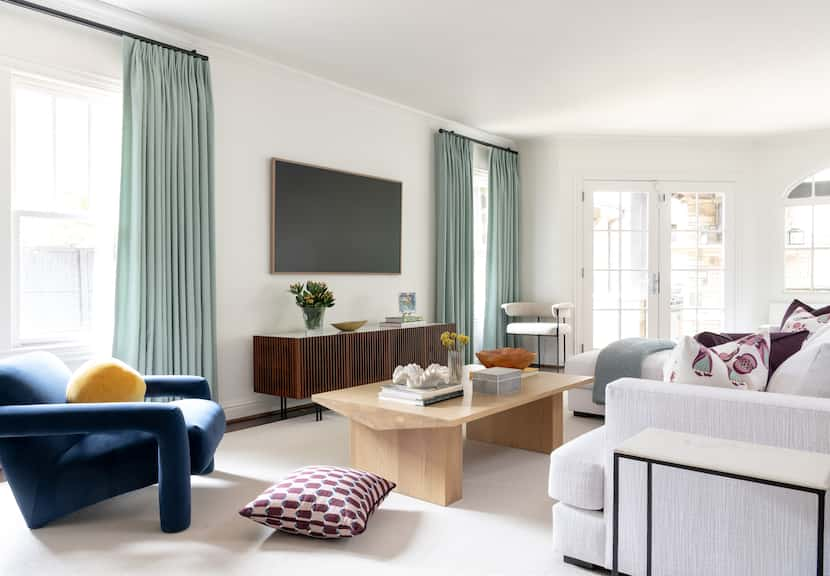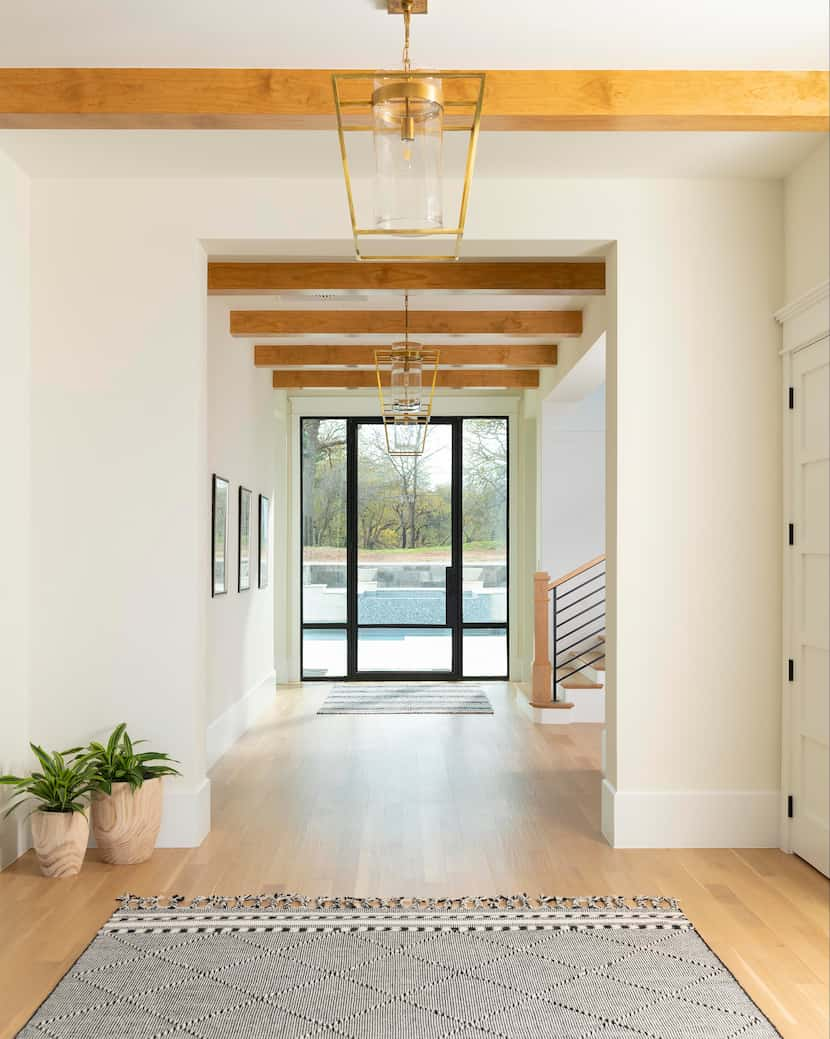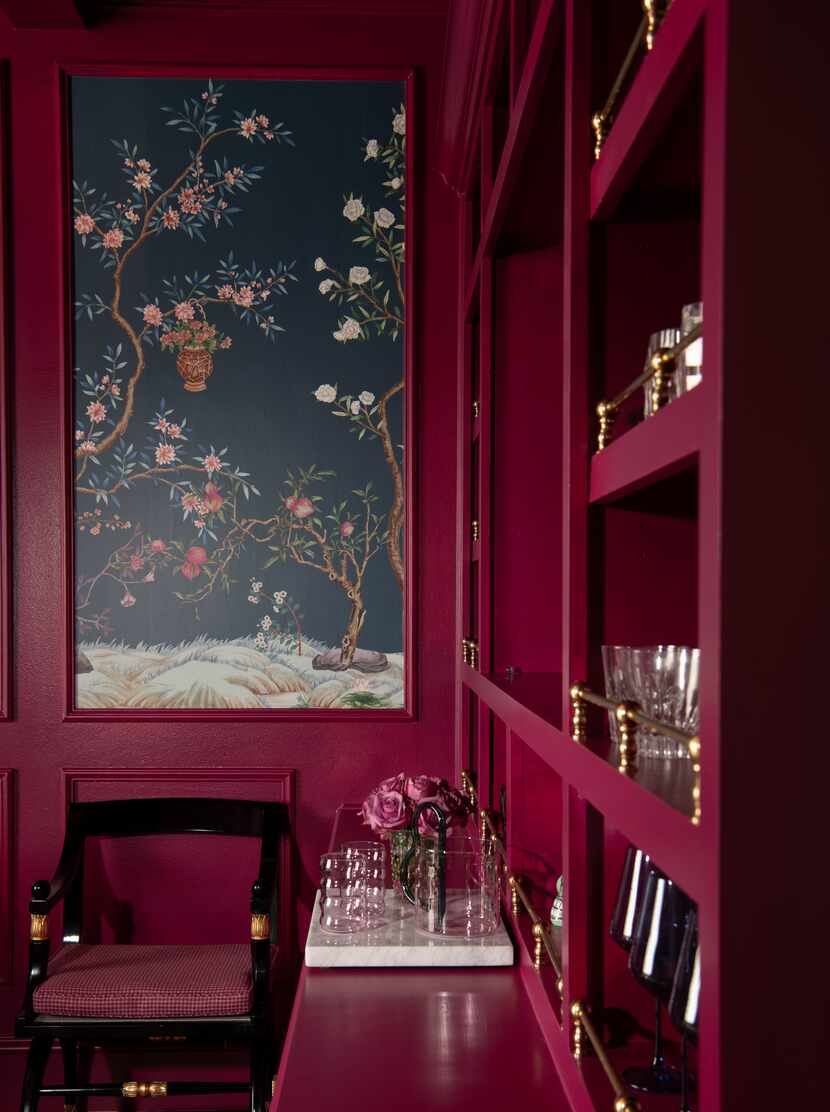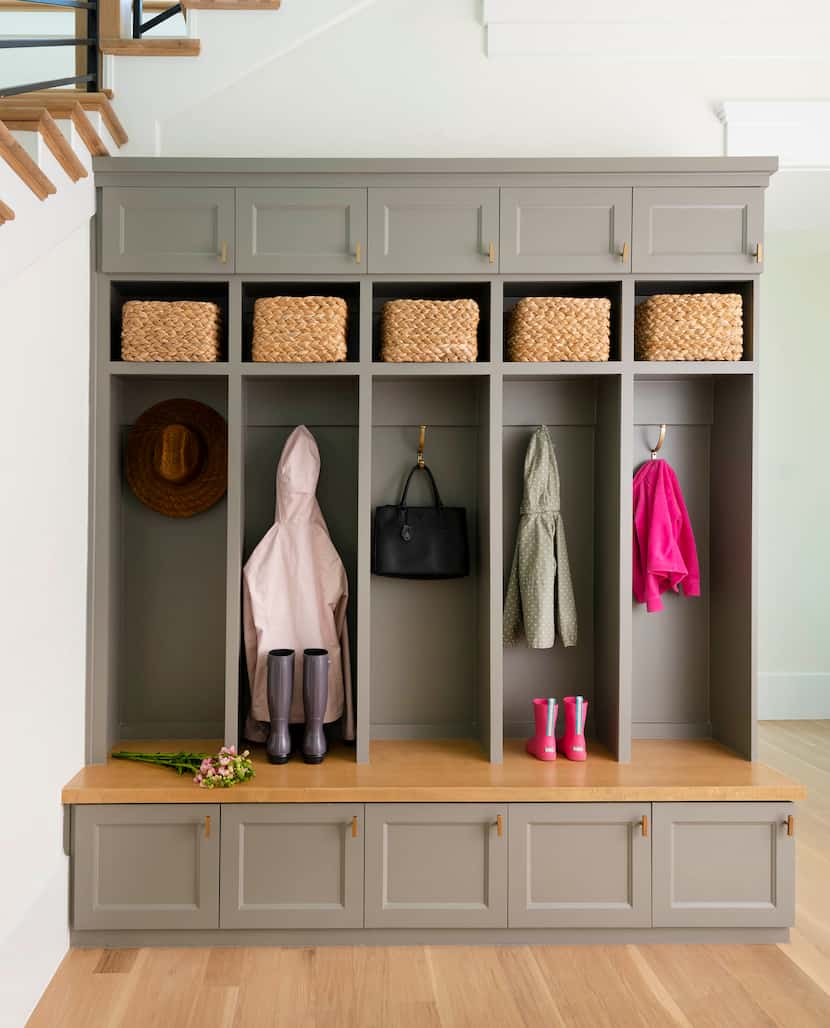When your mom was painting a space, the rules were straightforward: flats on the ceiling, eggshell on the walls and gloss on cabinetry, windowsills and trim. Today those rules are more like suggestions — and you can have a little more fun with your choices. Part of that is due to technological advances in paint, giving homeowners and designers a few more options without the extra upkeep. And then there are plenty of innovative ways designers and creatives are using paint to transform spaces. Whether you want to stick with tried-and-true paint finishes or go for something bolder, here are the paint finishes to choose for your next home project.
A primer on paint finishes
At the most basic level, a paint finish (or sheen, as it’s often called) tells you how much light will reflect off the painted surface. Glossy finishes have the highest degree of reflection, while matte finishes, as you might expect, are flat and have no reflection. In addition to determining the degree of light reflection, the finish or sheen may impact how easy or difficult the surface is to clean.
When you go to your local hardware store or paint retailer to choose a new color for a project, you’ll be asked which sheen you’d like. The most commonly referenced sheens, ranging from highest reflectivity to lowest, are high gloss, semigloss, satin, eggshell and flat.
Here’s a breakdown of the standard uses for each finish.
High gloss
High gloss has the most reflective finish of all paint sheens. It resists scuffs and scratches, but fingerprints will show in bright light. The finish is best used on extremely smooth surfaces since it can highlight imperfections in the painted material. You’re more likely to see this finish used on cabinetry, wood trims, furniture and doors; for a trendy and luxe look, you can use high-gloss paint on ceilings and walls. (More on that later.)
Semigloss
Semigloss paint still has a reflective quality, though it’s less intense than high gloss. One of the benefits of semigloss is that it’s durable, won’t show fingerprints, is hardy for cleaning and shows fewer surface variations. That’s why it’s most commonly used for trims, doors and high-moisture areas like bathrooms and kitchens.
Satin
Satin paint is the middle-ground finish that has some reflectivity, but imperfections are less visible with this sheen. You’ll still be able to see brushstrokes. Satin can be used on walls, cabinets, paneling and even for painted furniture.
Eggshell

Eggshell paint is the traditional choice for walls. It has a slight luster, with overall lower reflectivity than paints with a higher sheen. This makes it less durable or easy to clean. The flip side is that it won’t show brushstrokes or fingerprints. It is popular for hallways and other high-traffic areas.
Flat
Flat or matte paint has no reflectivity at all. It can be a good choice for textured walls or surfaces with imperfections because it will make them appear smooth. More often than not, ceilings are finished in flat paint — unless you’re going for an on-trend, bold ceiling finished in a high gloss. Choose flat paint for any space where you want the texture to be less visible. One important note is that flat paint is the least durable, and most difficult to clean, of all the paint finishes.
Flat paint offers a smooth, modern look

There’s more to flat paint than there used to be. Now you can get an ultra-matte finish. Benjamin Moore offers its ultra-flat Waterborne, while Farrow & Ball has Dead Flat. Although these new sheens are still flat paint, they are now scrubbable and more durable than previous iterations. While Waterborne is a ceiling paint, Dead Flat is versatile and allows for use in places where you wouldn’t have used a flat before, notes Michelle Kopfer, owner and principal designer of Michelle’s Interiors.
“[Dead Flat] is a complete flat that tends to absorb all the light,” she says. “The fun part is you can use it on things like furniture; you can use it on cabinetry.”
Another benefit of a flat, says Kopfer, is that it can bring an elevated look to a builder-standard surface. “In Texas especially, they always use some kind of texture on the wall. With flat paints, you don’t see that texture as much. It gives you a smoother look. When you have something that has reflection in it, a little bit of a sheen, then you see so much more of the imperfections.” By using flat paint, you can make an imperfect wall look like it has a much more expensive finish.
Choose flat variations like lime wash to add visual interest
Lime wash, a variation of flat paint, does the opposite of a traditional flat — it adds texture, and a really beautiful texture at that. Invented by the Romans, lime wash is made by firing crushed limestone at very high temperatures, then mixing it with natural pigments and water. The resulting highly textured, flat finish makes the application technique extremely important, notes Emory McKim, owner of Emory McKim Design. It’s always applied with a brush, not a roller, giving it that old-world look of an imperfect, hand-painted wall.
Embrace the high style of high gloss

Although McKim loves the advances in flat paints, at heart she’s a “high-gloss girl,” she shares. “I love the formality of it. I think it’s funky and fun. High-gloss paint is a great way to transform a space without having to put much money into lighting, wall coverings or beams. You can choose a high-gloss sheen in any fun, bold color.”
For even more impact, you can use high-gloss paints for the trend of color drenching, which refers to the use of one color for an entire room, even the furniture. It’s particularly good for updating an older space that might have extensive woodwork or paneling. “You could paint the whole room, including all of the woodwork, in this beautiful, high-gloss sheen, and it completely changes the look of the room,” Kopfer says. “You still have the beautiful, traditional woodwork, but it’s totally dressed up in a contemporary paint finish.”
Glossy finishes function like mirrors, adds Kopfer, in terms of how they impact the perception of a space. “It’s become more popular recently to do a completely smooth ceiling, even in bedrooms, with a very glossy finish. It’s almost like making the ceiling a little bit of a mirror so it makes the room feel bigger.”
McKim cautions that high-gloss looks aren’t for every space. “High gloss does have to be prepped. So you do sort of have to understand that your walls need to be smoother in order to do high gloss. It’s going to show more imperfections in the walls.” High-gloss paint will also show fingerprints and reflections, so take that into consideration. “You don’t want a bunch of reflective finishes in a media room, typically because you don’t want whatever’s going on the screen reflecting off of that. There’s some argument to be made for [not using a glossy finish] in a bedroom either,” McKim shares. “You’re trying to minimize light, and flat finishes reflect less light.”
Maintain your finishes with simple cleaning products

After you apply your paint, how do you maintain the look? The main recommendation is to clean fingerprints and any other spots in high-traffic areas regularly. Use a sponge or damp cloth — and a lot of caution if you’re thinking about a Magic Eraser. Although it’s a tool many folks depend on for day-to-day cleaning, it can also take low-quality paint right off the wall, says Alejandro Estrada, owner of Mesquite-based Color Unlimited Painting. Even if your paint is high quality, he recommends sticking to the basics. “I don’t trust anything other than just soap and water, or just water, to clean it.” If the problem area won’t come clean with a rag and warm water, you should probably touch it up instead.
For small touch-ups, you don’t necessarily need a paintbrush; McKim suggests a tool that looks a bit like a makeup applicator. You may also want to bring your painter back every five years or so “if you’re looking for perfection,” she says. A professional touch-up includes sealing cracks, caulking molding and trim, and repainting those areas.
Be sure to keep information about your paint colors: what brand and shade, the finish you used and what rooms they’re in. You could keep the paint chips, write on the back and punch a hole through the edge for a ring; Kopfer suggests emailing the information to yourself. Even though most paint suppliers have the ability to match, it’s not necessarily exact.
Love homes, design and real estate? Get more good stuff from Abode by following us on Instagram and Facebook.











